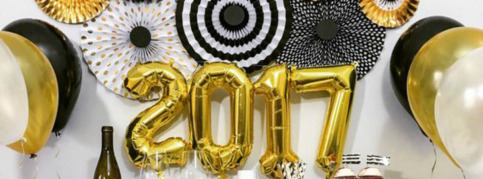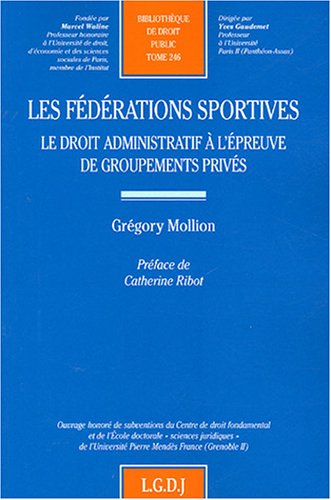Angles, lines, and shapes. The second floor of the Camden Arts Gallery has been transformed into a brightly-coloured maze. Orchestrated by French born, Milan based artist, Nathalie du Pasquier, the pieces surrounding the walls of the gallery are new and have been tailored specifically to fit the space. She previously exhibited a similar style of work in situ at Pace gallery in London last August.
After the Camden Arts Centre, the Institute of Contemporary Art in Philadelphia will have the privilege of staging Du Pasquier’s work next September.
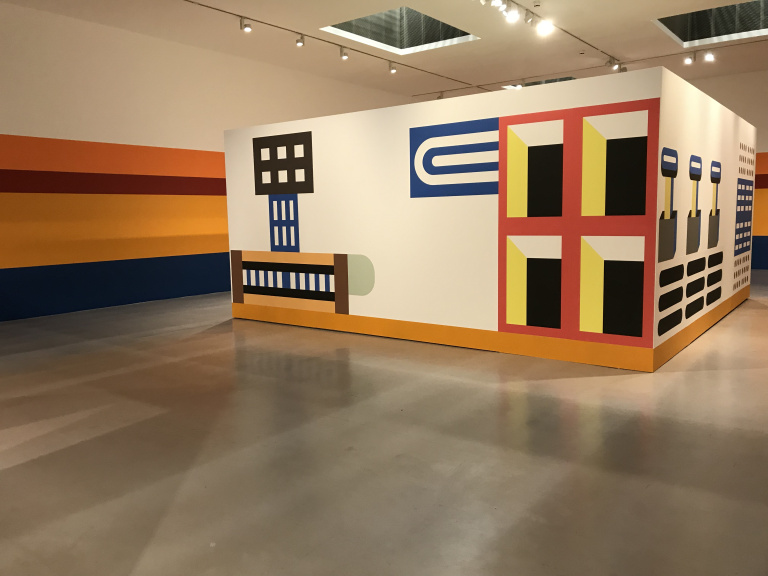 Nathalie du Pasquier at Camden Arts Centre ©One Art Citizen
Nathalie du Pasquier at Camden Arts Centre ©One Art Citizen
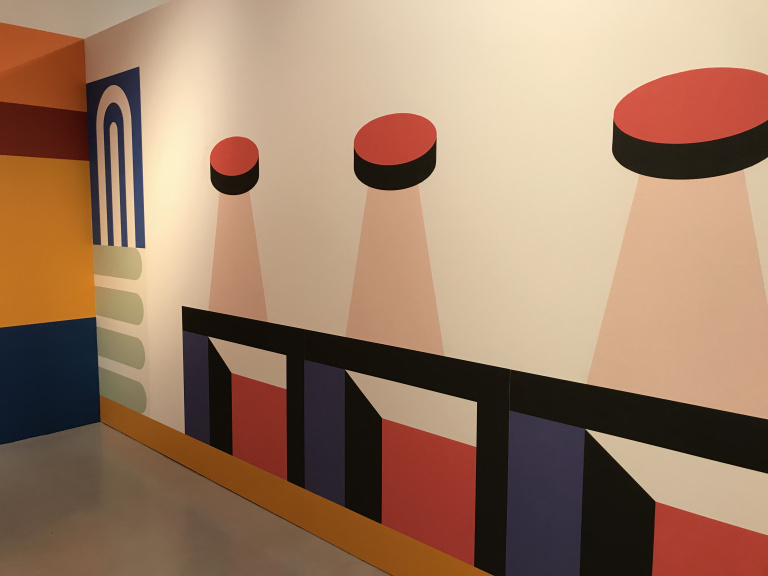 Nathalie du Pasquier at Camden Arts Centre ©One Art Citizen
Nathalie du Pasquier at Camden Arts Centre ©One Art Citizen
The block colours and simple, innocent geometric shapes, conjure an energetic and vivid atmosphere. Drawings, wall paintings, and 3D objects placed on pedestals call for attention and the eyes of those entering this world of enthusiasm, bounce between the mounted pieces. .
The patterns are geometrically bold, often repetitive and symmetrical, interweaving in a river of colours across a light mat surface painted in shades of blues and greens. Red, pastel pink, red, marine blue, orange, grey, yellow, and brown all blend and intersperse harmoniously.
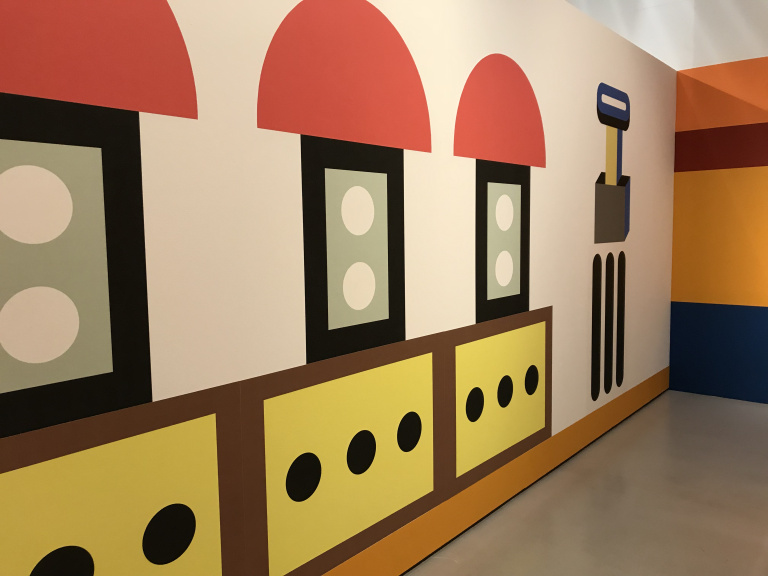 Nathalie du Pasquier at Camden Arts Centre ©One Art Citizen
Nathalie du Pasquier at Camden Arts Centre ©One Art Citizen
 Nathalie du Pasquier at Camden Arts Centre ©One Art Citizen
Nathalie du Pasquier at Camden Arts Centre ©One Art Citizen
Du Pasquier was creating textile patterns for Italian companies when she met architect Ettore Sottsass through her partner George Sowden. Sottsass asked them to find the Memphis group together in the 1980’s.
The Memphis Group injected vibrant colours and daring patterns to geometrical furniture, textiles, carpets, plastic laminates, furniture and objects. Du Pasquier’s patterns were soon covering the designs. The artist had no formal training but her travels to Gabon and West Africa most likely impacted the production of her work, the intensity of her choice of colours and the fabrication of her motifs. In 1987, traditional painting became her focus.
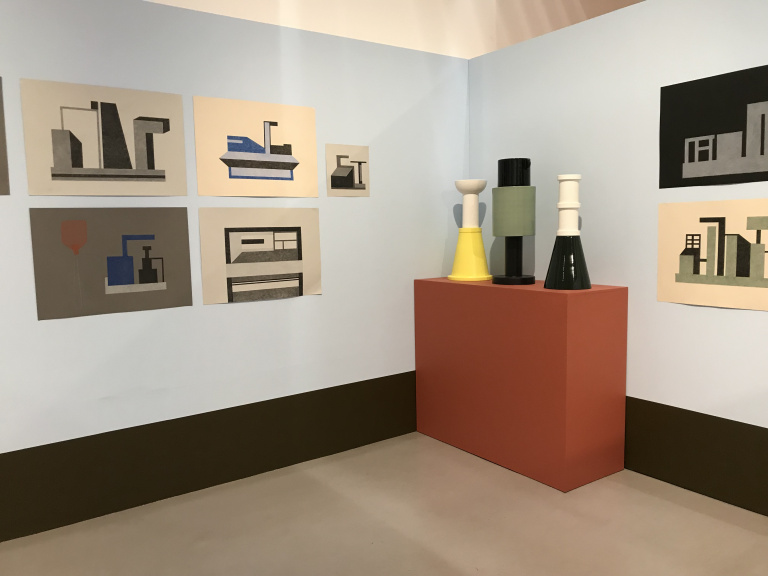 Nathalie du Pasquier at Camden Arts Centre ©One Art Citizen
Nathalie du Pasquier at Camden Arts Centre ©One Art Citizen
 Nathalie du Pasquier at Camden Arts Centre ©One Art Citizen
Nathalie du Pasquier at Camden Arts Centre ©One Art Citizen
Her career is dense and she is responsible for many creations which are all well retraced chronologically on her website. There, one can perceive the immensity of her repertoire; pieces of furniture created for Memphis her own canvas paintings and recent collaborations and works.
‘I am a painter and what you perhaps refer to as my installations are the “sets” I prepare as models for my paintings. Then I focus on painting and at a larger stage, in an exhibition space perhaps, or simply in my studio, I rearrange my paintings with some of the elements I used to construct my sets.’ The models are the starting point which the artist sketches before printing them on the walls. ‘My paintings are the result of sets that I prepare of what I want to represent.’
By presenting her ‘drafts’ the artist demonstrates how she creates a dialogue between each piece. Amid the accumulation of patterns, there is a logic which she describes by the aligned 3D objects and their drawings.
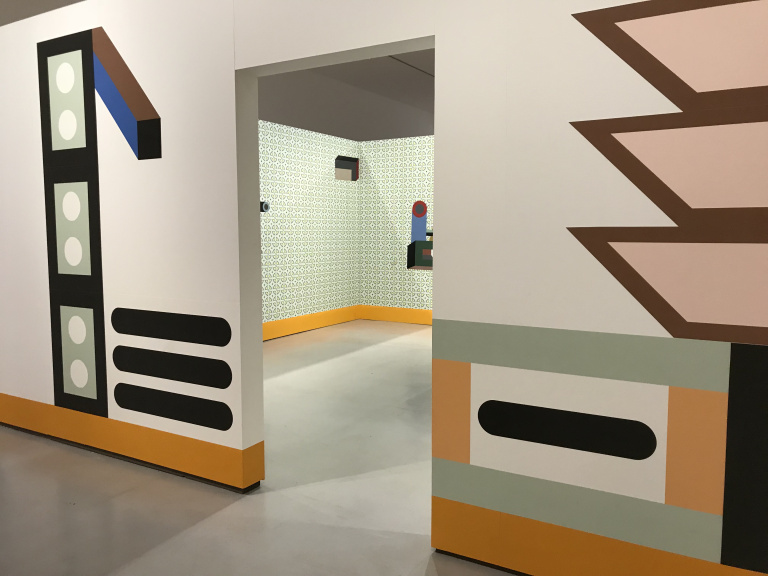 Nathalie du Pasquier at Camden Arts Centre ©One Art Citizen
Nathalie du Pasquier at Camden Arts Centre ©One Art Citizen

The illusion of a moving platform made of 3D textures, floating geometry and infinite combinations of colours, fools the eye.
The predictability of the patterns act as a trompe l’oeil. At the detour of one wall, we are engulfed in another four walls, compelled to confront a new vision of colours from a different perspective. We end up losing our position, destabilized and agitated by the animations surrounding us. When normally, pieces of art are usually static, here, we move around them.
Other Rooms: Nathalie du Pasquier at Camden Arts Centre (29 September – 14 January 2017)
Advertisements Share this:

